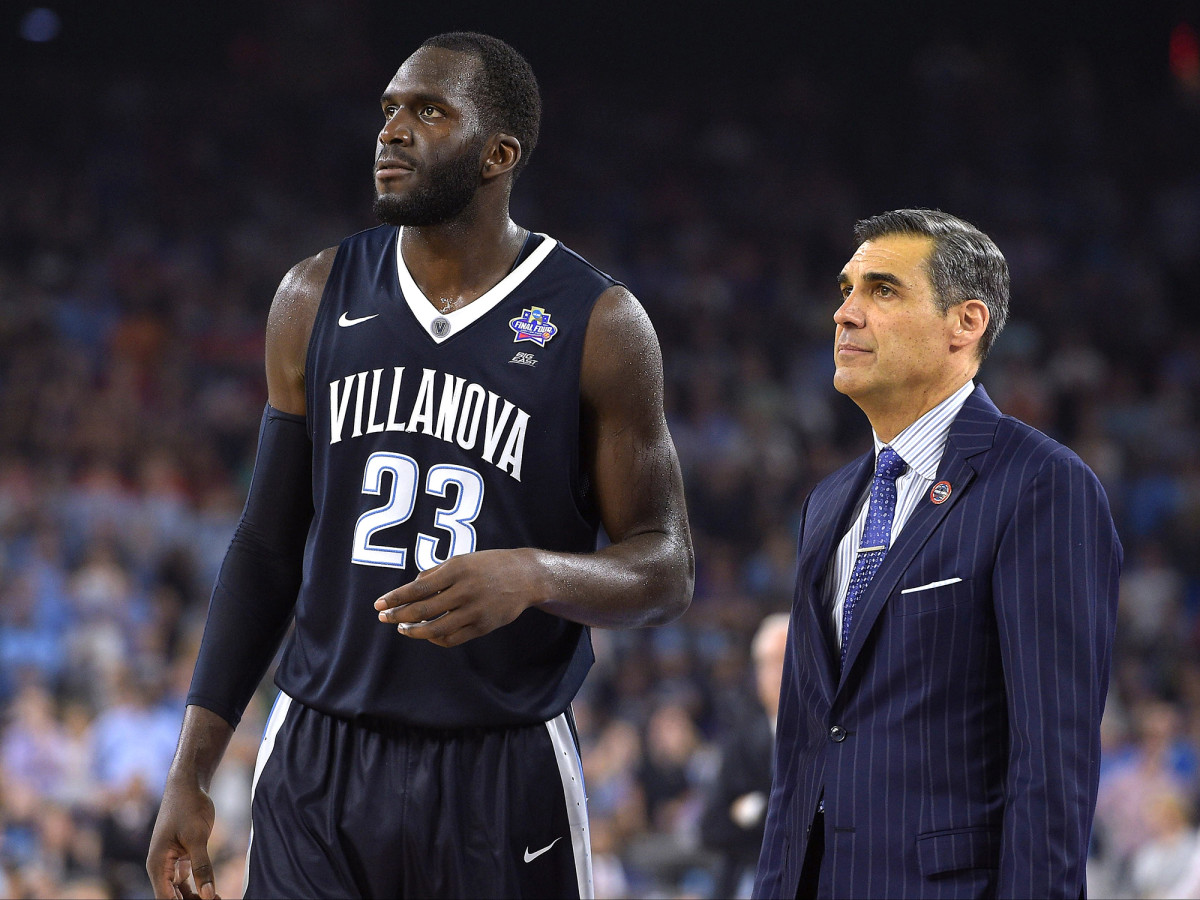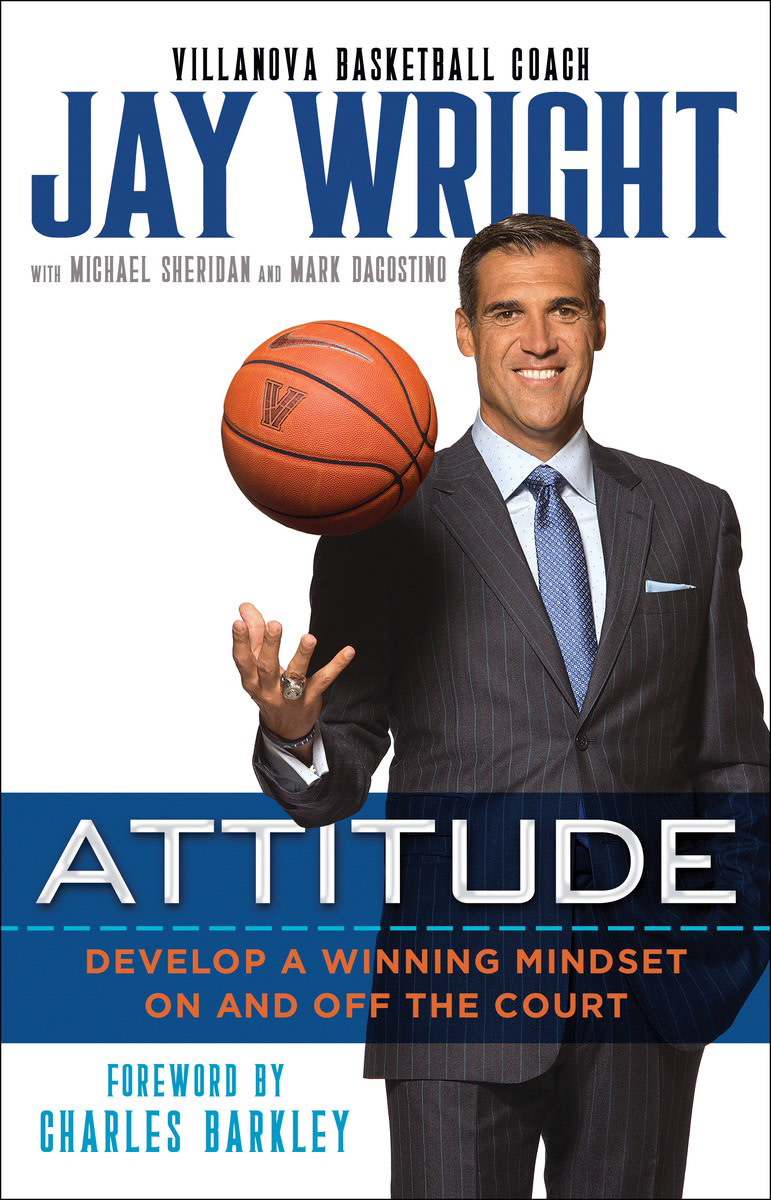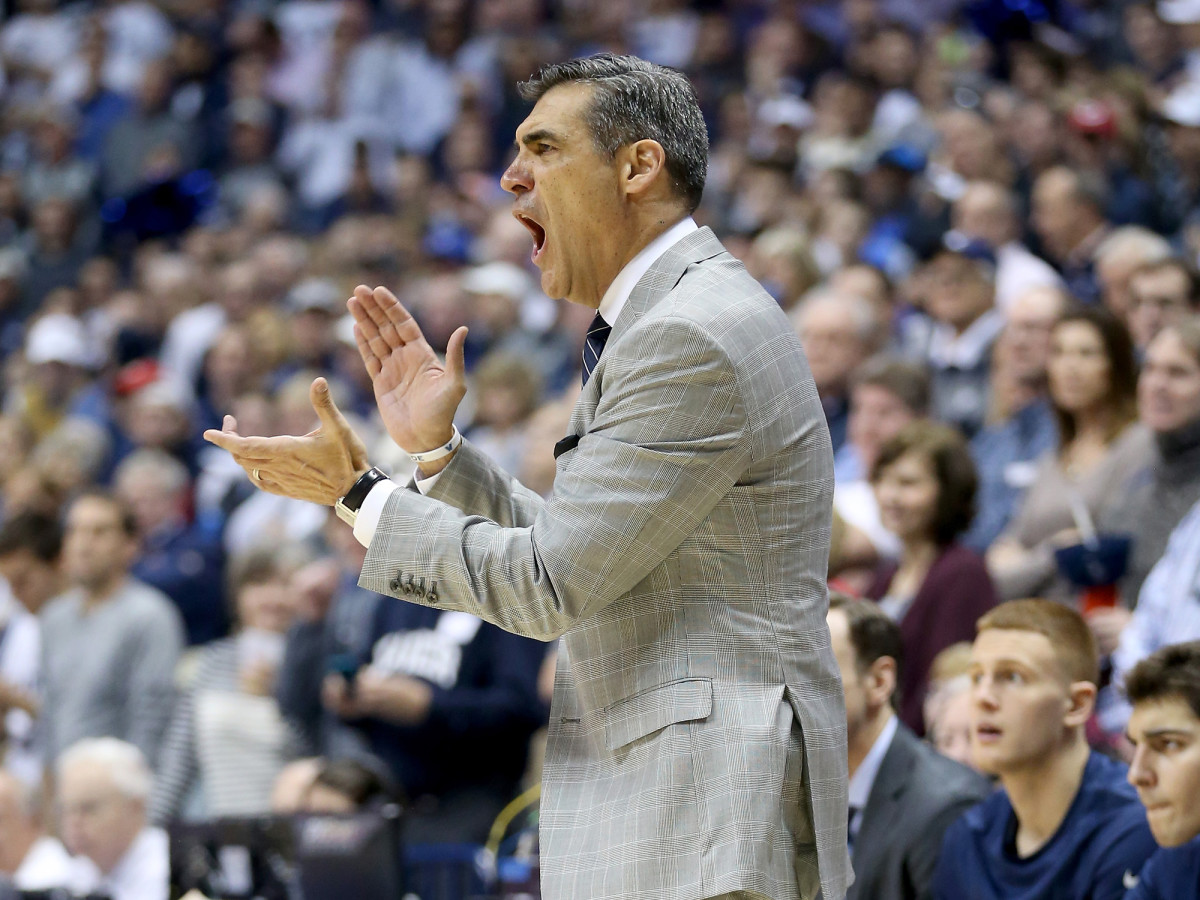Inside Villanova’s national championship game halftime locker room

The following is excerpted from the book ATTITUDE: Develop a Winning Mindset on and off the Court by Jay Wright, Michael Sheridan and Mark Dagostino, published this month by Ballantine Books, an imprint of Random House, a division of Penguin Random House LLC. Copyright © 2017 by Jerold Wright. All Rights Reserved.
How can I put this?
Let’s just say that the first half did not go as we had hoped.
The fact that it played out in front of a TV audience of millions and 74,340 fans in the stands wasn’t the worst of it. Neither was the fact that it unfolded before a gallery of Villanova legends seated just behind our bench, including Coach Massimino, 1985 MVP Ed Pinckney, NBA All-Star Kyle Lowry, and Mike Fratello, the former NBA head coach who had once been on Coach Mass’ staff.
The worst of it was that we just weren’t playing our best.
There were no more games to go. No more chances to improve. Our one goal was to be playing our best at the end of the season, and this was it. We were at the finish line. And for all of our energy— perhaps because of it—we weren’t playing our best. We weren’t playing efficiently.

Attitude
by Jay wright
The coach of the Villanova University men’s basketball team Jay Wright shares his secrets on developing a winning mindset on and off the court.
The halftime walk from the bench to the locker room seemed interminable. That is never truer than when you find yourself staring up at a deficit, which was the situation we found ourselves in after twenty minutes of action against the North Carolina Tar Heels. A late spurt had propelled Roy Williams’ team to a 39–34 lead.
Were it not for the offensive heroics of our sixth man, Phil Booth, the deficit may have been larger.
During the NCAA Tournament, the halftime breaks last twenty minutes, five minutes longer than they do in the regular season. Our routine as a team over the previous three weeks was to enter the locker room, players and staff alike, and I would speak briefly to the group. The coaching staff then stepped outside the door, huddled privately for several minutes, and then re-entered, diving into the key strategic points we wanted to review for the second half.
As I approached the assistant coaches on this night, I was startled at the sight of our senior captain, Daniel Ochefu, breaking away from the rest of the team to approach me. I could tell he had something on his mind.
He looked at me directly, and with intensity in his eyes said: “Coach, I got this.”

With twenty minutes left to play in his four-year career, Daniel was pleading with me to let him address his teammates—without the coaches present—before I did.
This was not a routine request. If it had come from a player twenty years earlier, during my tenure at Hofstra, or even a decade before, in my early years at Villanova, I’m not sure I would have acquiesced. (I have had former assistant coaches tell me there is no way I would have agreed to it.) But in this time, in this place, with a national championship on the line, it felt like the right move.
Daniel entered the locker room. The door closed behind him. Several of my assistants gave me a look that said, You sure about this?
The truth is I wasn’t sure it was the best idea. But what I had confidence in was the bond and cohesion of the 2015–2016 Villanova Wildcats. That bond had been forged over the course of several seasons, and of our own public failures in the 2014 and 2015 NCAA tournaments. I trusted the commitment and leadership skills of Daniel and his fellow senior captain, Ryan Arcidiacono. No two individuals were more responsible for us having reached this point than they were.
Daniel was loud. Loud enough that we could hear him through the closed steel doors. When he had spoken to me outside the locker room, I could sense his anger at the way we’d been playing, but it was a controlled anger. If I had thought he seemed out of control, I wouldn’t have let him speak. Still, I listened just to be sure.

I was pleased when his anger turned to something else. Like a good coach, Daniel showed his anger, even took it right to the edge, but never went over the line. He told his teammates that this was not Villanova Basketball and it was not what we came here to do. He said he “isn’t going down this way” and, most important, “we aren’t going down this way.” And then the anger turned to focus: “We’ve come this far. Let’s finish this playing together, our way!”
While Daniel addressed his teammates, I began studying the halftime statistics. There were a few troubling numbers staring back at me.
First and foremost, North Carolina held a 15–9 edge in rebounding. Though the Tar Heels owned a size advantage, we pride our-selves on taking care of business on the glass. We hadn’t done that effectively in the first half.
North Carolina had also connected on fifteen of twenty-eight first half field goal attempts (.536), including seven of nine from beyond the three-point arc. The Tar Heels had not been a statistically prolific three-point shooting team over the course of the season and we had game-planned for that accordingly. But on this night they had heated up from the perimeter and burned us with seven threes.
When Daniel finished his message to the team, our staff re-entered the locker room. I calmly emphasized to the players the few areas we needed to improve upon. Essentially it came down to a reliance on our core values, highlighted by defending, rebounding, and playing together.

I told the guys, “Daniel is right. What we have done all year is commit to our basic values and our scouting reports.” I made it clear that we hadn’t done either of those things in the first half. We had been lacking in the simple concepts of getting back to the paint on defense on the fast break, stopping easy baskets. We didn’t want to run with the Tar Heels, and yet at times that’s exactly what we had done. In the scouting report we had identified certain players to whom we couldn’t allow open looks at three-pointers, and those guys had scorched us. Joel Berry II and Justin Jackson were a combined six of six from beyond the arc in the first half.
It was uncharacteristic of us to get caught up in the moment, I told them, and I thought we had let that happen. It was time to turn it around. It was time to focus. It was time to play the best basketball we could. Not for the fans. Not for anyone else. For us.
When the players went back out on the floor to warm up, our coaching staff discussed second-half adjustments. Strategically, we made one major alteration.
Over the course of the season, we had used a 1-3-1 three-quarter court press to disrupt our opponents. The traps weren’t designed so much to create turnovers, though we did generate some of those, as to interrupt the flow of a team working with a 30-second shot clock. Carolina, though, had beaten our press in the first half and exploited it for some easy baskets.
So then and there, we elected to dispatch the press and rely on our staple: a man-to-man half-court defense.
One point I made to the staff was that it was impossible to overstate the magnitude of this game—and despite what I’d just said to our players about not getting overwhelmed by the moment, the pressure they were feeling was natural. Villanova and North Carolina had been among the nation’s best teams throughout 2015–2016. As skilled and talented as we were, the reality was this was still a game contested by young men, aged eighteen to twenty-two, playing on a stage they had dreamed about since they first picked up a basketball. This was unique, and we had to keep that in mind in the second half.
We had done our best to shelter our guys in the days leading up to the Final Four by remaining in our regular season routine and doing our best to stay in our cocoon. Even my wife felt the need to explain that approach. When Patty encountered some of the players’ parents at our Houston hotel, she thanked them for their understanding that they hadn’t gotten the chance to spend much time with their sons. The parents’ response: Don’t worry about it; we’re all in. Let’s win this thing.
